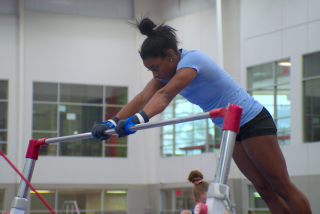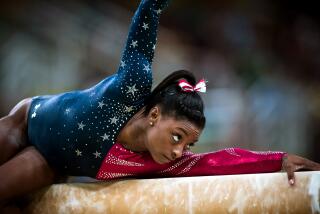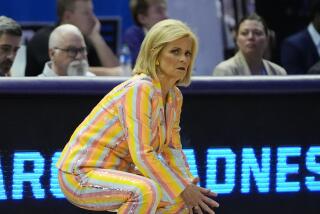NONFICTION - Jan. 1, 1995
IN THESE GIRLS, HOPE IS A MUSCLE by Madeleine Blais. (Atlantic: $21.; 263 pp.) Madeleine Blais’s first “real job” was as a reporter on the Boston Globe. Her big break came in 1972 when Diane Shah (then at the National Observer) was denied a press pass from the management of the Red Sox to cover the game--having asked for permission to talk with the players on the field (not in the locker room). Blais became what she calls “the first woman to cover the first woman who covered the Boston Red Sox.” This is the story of a girl’s high school basketball team in Amherst, Massachusettes, hometown to Emily Dickinson and a lot of academics. They are called the Amherst Lady Hurricanes, and while Amherst (Blais calls it “achingly democratic,” “self absorbed,” “the only place in the United States where men can wear berets and not get beaten up,” a town where citizens once reported “a racoon behaving strangely in the median strip”) is not the setting of Hoop Dreams, many of these girls are uniquely unprepared for success in this world. They suffer, in their adolescence, as Blais credits Carol Gilligan, “not a loss of innocence but a loss of knowledge, knowledge in most cases about how good they are... at things: adept.” The co-captains are Jen and Jamila. Jamila is novelist John Edgar Wideman’s daughter, and the team’s high-profile player. Jen Pariseau was raised by her father from the age of two in a small town near Amherst called Pelham. She is big-hearted and cares more about her friendship with Jamila than maybe even the game, even as Jamila consumes the limelight. All of these girls have concerns beyond winning (which does not mean that they don’t like to win) that often get in the way of their competitivess. They are particularly depressed after losing one game (Blais describes a “stampede of tears” in the bus on the way home). “Today I realized,” writes one player, Lucia, in her journal, “how much I love basketball. We lost the Western Mass semifinals to Hamp. It’s not fair. It’s not fair. Amherst is a team of unselfish, incredibly talented, team players who love their teammates. Northampton is a bunch of good basketball players put together who do not look like a team.” Describing a beautiful shot by one player, Blais uses similar language: “The skill of it! The unselfishness! The depth of friendship it revealed.” In a critical game, a very shy player who coach Ron Moyer has asked to play like her “evil twin,” thinks to herself, “The court is where you can be all those things we’re not supposed to be: aggressive, cocky, strong. It’s okay; it’s alright.”
More to Read
Sign up for our Book Club newsletter
Get the latest news, events and more from the Los Angeles Times Book Club, and help us get L.A. reading and talking.
You may occasionally receive promotional content from the Los Angeles Times.









